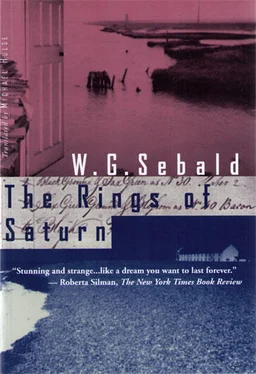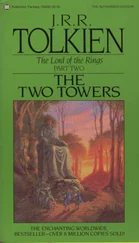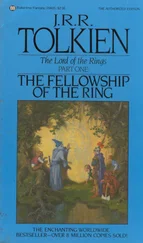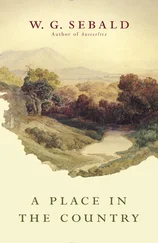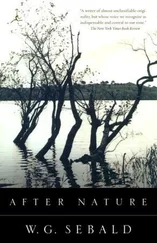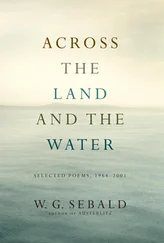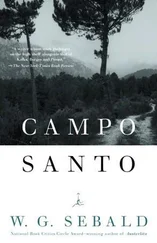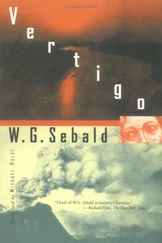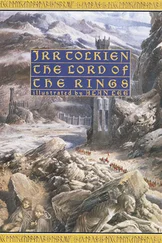In the Middle Ages, the manor of Somerleyton was held by the FitzOsberts and the Jernegans, but over the centuries ownership of the estate passed to a number of families related either by blood or by marriage. From the Jernegans it feel to the Wentworths, from the Wentworths to the Garneys, from the Garneys to the Allens, and from the Allens to the Anguishes, whose line became extinct in 1843. In that year, Lord Sydney Godolphin Osborne, a distant relative of that extinct family chose not to take up his inheritance and instead sold the entire property to Sir Morton Peto. Peto, who came of humble origins and who had worked his way up from bricklayer's labourer, was just thirty when he purchased Somerleyton, but was already among the foremost entrepreneurs and speculators of his time. In the planning execution of prestigious construction projects in London, among them Hungerford Market, the Reform Club, Nelson's Column and a number of West End theatres, he set new standards in every respect. Moreover, his financial interests in the railways being built in Canada, Australia, Africa, Argentina, Russia and Norway had made him a truly massive fortune in the shortest of times, so that he was now ready to crown his ascent into the highest social spheres by establishing a country residence, the comfort and extravagance of which would eclipse everything that nation had hitherto seen. And indeed Morton Peto's dream, a princely palace in what was known as the Anglo-Italian style, along with its interiors, was completed within a very few years on the site of the old, demolished hall. As early as 1852, The Illustrated London news and other society periodicals were running the most effusive reports on the new Somerleyton. In particular, it was famed for the scarcely perceptible transitions from interiors to exterior; those who visited were barely able to tell where the natural ended and the man-made began. There were drawing rooms and winter gardens, spacious halls and verandahs. A corridor might end in a ferny grotto where fountains ceaselessly plashed, and bowered passages criss-crossed beneath the dome of a fantastic mosque. Windows could be lowered to open the interior onto the outside, and inside the landscape was replicated on the mirror walls. Palm houses and orangeries, the lawn like green velvet, the baize on the billiard tables, the bouquets of lowers in the morning and retiring rooms and in the majolica vases on the terrace, the birds of paradise and the golden pheasants on the silken tapestries, the goldfinches in the aviaries and the nightingales in the garden, the arabesques in the carpets and the box-edged flower beds — all of it interacted in such a way that one had the illusion of complete harmony between the natural and the manufactured. The most wonderful sight of all, according to one contemporary description, was Somerleyton of a summer's night, when the incomparable glasshouses, borne on cast-iron pillars and braces and seemingly weightless in their filigree grace, shed their gleaming radiance on the dark. Countless Argand burners backed with silver-plated reflectors, the white flames consuming the poisonous gas with a low hissing sound, cast an immense brightness that pulsated like the current of life that runs through the earth.
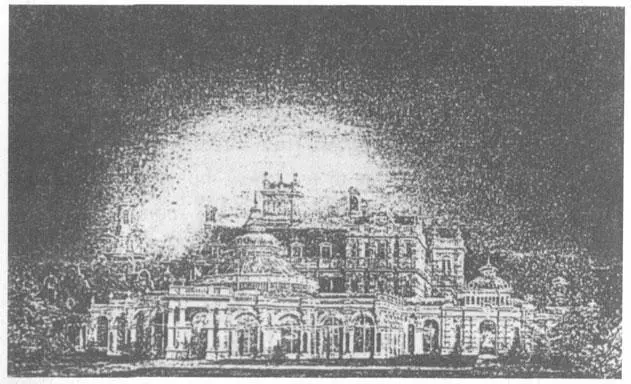
Not even Coleridge, in an opium dream, could have imagined a more magical scene for his Mongol overlord, Kubla Khan. And now, the writer continues, suppose that at some point during a soirée you and someone close to you climb the campanile at Somerleyton, you stand on the gallery at the very top and are brushed by the soundless wing of a bird gliding by in the night! The intoxicating scent of linden blossom is wafted up from the great avenue. Below, you see the steep roofs tiled with dark blue slate, and in the snow-white glow from the shimmering glasshouses the level blackness of the lawns. Further off in the park drift the shadows of Lebanese cedars; in the deer enclosure, the wary animals keep one eye open in their sleep; and beyond the furthermost perimeter, away toward the horizon, the marshes extend and the sails of the mills are turning in the wind.
Somerleyton strikes the visitor of today no longer as an oriental palace in a fairy tale. The glass-covered walks and the palm house whose lofty dome used once to light up the nights, were burnt out in 1913 after a gas explosion and subsequently demolished. The servants who kept all in good order, the butlers, coachmen, chauffeurs, gardeners, cooks, sempstresses, and chambermaids, have long since gone. The suites of rooms now make a somewhat disused, dispirited impression. The velvet curtains and crimson blinds are faded, the settees and armchairs sag, the stairways and corridors which the guided tour takes one through are full of bygone paraphernalia. A camphor wood chest which may once have accompanied a former occupant of the house on a tour of duty to Nigeria or Singapore now contains old croquet mallets and wooden balls, golf clubs, billiard cues and tennis racquets, most of them so small they might have been intended for children, or have shrunk in the course of the years. The walls are hung with copper kettles, bedpans, hussars' sabres, African masks, spears, safari trophies, hand-coloured engravings of Boer War battles— Battle of Pieters Hill and Relief of Ladysmith: A Bird's-Eye View from an Observation Balloon —and a number of family portraits painted perhaps some time between 1920 and 1960 by an artist not untouched by Modernism, the plaster-coloured faces of the sitters mottled with scarlet and purple blotches. The stuffed polar bear in the entrance hall stands over three yards tall. With its yellowish and moth-eaten fur, it resembles a ghost bowed by sorrows. There are indeed moments, as one passes through the rooms open to the public at Somerleyton, when one is not quite sure whether one is in a country house in Suffolk or some kind of no-man's-land, on the shores of the Arctic Ocean or in the heart of the dark continent. Nor can one readily say which decade or century it is, for many ages are superimposed here and coexist. As I strolled through Somerleyton Hall that August afternoon, amidst a throng of visitors who occasionally lingered here or there, I was variously reminded of a pawnbroker's or an auction hall. And yet it was the sheer number of things, possessions accumulated by generations and now waiting, as it were, for the day when they would be sold off, that won me over to what was, ultimately, a collection of oddities. How uninviting Somerleyton must have been, I reflected, in the days of the industrial impresario Morton Peto, MP, when everything, from the cellar to the attic, from the cutlery to the waterclosets, was brand new, matching in every detail, and in unremittingly good taste. And how fine a place the house seemed to me now that it was imperceptibly nearing the brink of dissolution and silent oblivion. However, on emerging into the open air again, I was saddened to see, in one of the otherwise deserted aviaries, a solitary Chinese quail, evidently in a state of dementia, running to and fro along the edge of the cage and shaking its head every time it was about to turn, as if it could not comprehend how it had got into this hopeless fix.
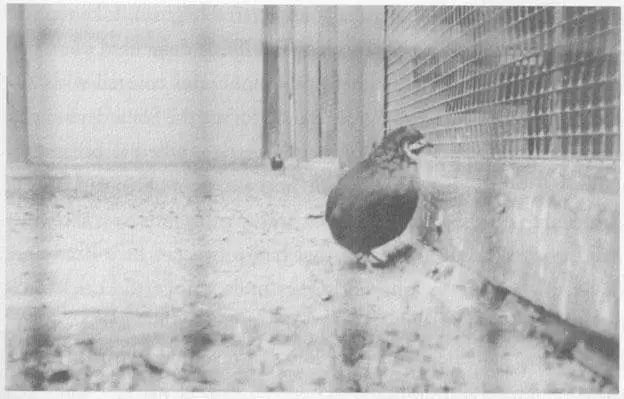
The grounds, in contrast to the waning splendour of the house, were now at their evolutionary peak, a century after the heyday of Somerleyton. The flower beds might well have been better tended and more gloriously colourful, but today the trees planted by Morton Peto filled the air above the gardens, and several of the ancient cedars, which were there to be admired by visitors even then, now extended their branches over well-nigh a quarter of an acre, each an entire world unto itself. There were sequoias towering more than sixty yards, and rare oriental planes, the outermost extremities of which had bowed down as low as the lawn, securing a hold where they touched the ground, to shoot up once more in a perfect circle. It was easy to imagine this species of plane tree spreading over the country, just as concentric circles ripple across water, the parents becoming weaker and dying off from within as the progeny conquers the land about them. Some of the lighter-coloured trees seemed to drift like clouds above the the parkland. Others were of a deep, impenetrable green. Like terraces the crowns rose one upon another, and if one defocused one's eyes just slightly it was like looking upon mountains covered with vast forests. Yet the densest and greenest was for me the Somerleyton yew maze, in the heart of the mysterious estate, where I became so completely lost that I could not find the way out again until I resorted to drawing a line with the heel of my boot across the white sand of every hedged passage that had proved to be a dead end. Later, in one of the long hothouses built against the brick walls of the kitchen garden, I struck up a conversation with William Hazel, the gardener who now looks after Somerleyton with the help of several odd-job men. When he realized where I was from he told me that during his last years at school, and his subsequent apprenticeship, his thoughts constantly revolved around the bombing raids then being launched on Germany from the sixty-seven airfields that were established in East Anglia after 1940. People nowadays hardly have any idea of the scale of the operation, said Hazel. In the course of one thousand and nine days, the eighth airfleet alone used a billion gallons of fuel, dropped seven hundred and thirty-two thousand tons of bombs, and lost almost nine thousand aircraft and fifty thousand men. Every evening I watched the bomber squadrons heading out over Somerleyton, and night after night, before I went to sleep, I pictured in my mind's eye the German cities going up on flames, the firestorms setting the heavens alight, and the survivors rooting about in the ruins. One day when Lord Somerleyton was helping me prune the vines in this greenhouse, for something to do, said Hazel, he explained the Allied carpet-bombing strategy to me, and some time later he brought me a big relief map of Germany. All the place names I had heard on the news were marked in strange letters alongside symbolic picture sof the towns that varied in the number of gables, turrets and towers according to the size of population; and moreover, in the case of particularly important cities, there were emblems of features associated with them, such as Cologne cathedral, the Römer in Frankfurt, or the statue of Roland in Bremen. Those tiny images of towns, about the size of postage stamps, looked like romantic castles, and I pictured the German Reich as a medieval and vastly enigmatic land. Time and again I studied the various regions on the map, from the Polish border to the Rhine, from the green plains of the north to the dark brown Alps, partly covered with eternal snow and ice, and spelled out the names of the cities, the destruction of which had just been announced: Braunschweig and Würzburg, Wilhelmshaven, Schweinfurt, Stuttgart, Pforzheim, Düren, and dozens more. In that way I got to know the whole country by heart; you might even say it was burnt into me. At all events, ever since then I have tried to find out everything I could that was in any way connected with the air in the air. In the early Fifties, when I was in Lüneburg with the army of occupation, I even learnt German, after a fashion, so that I could read what the Germans themselves had said about the bombings and their lives in the ruined cities. To my astonishment, however, I soon found the search for such accounts invariably proved fruitless. No one at the time seemed to have written about their experiences or afterwards recorded their memories. Even if you asked people directly, it was as if everything had been erased from their minds. As for myself, though, whenever I close my eyes, to this day, I see the formations of bombers, Lancasters and Halifaxes, Liberators and Flying Fortresses, going out towards Germany across the grey North Sea, and then straggling home in the dawn. In early April 1945, not long before the War ended, said Hazel, sweeping up the vine shoots he had cut, I saw two American Thunderbolts crash here, over Somerleyton, It was a fine Sunday morning. I had been helping my father with an urgent repair job up on the campanile, which is really a water tower. When we were finished we stood on the look-out platform, from where there is a view right out to sea. We had hardly had time to look around when the two planes, returning from a patrol, staged a dogfight over the estate, out of sheer high spirits, I suppose. We could see the pilots' faces clearly in their cockpits. The engines roared as they chased after each other, or flew side by side in the bright spring air, till their wing tips touched as they banked. It had seemed like a friendly game, said Hazel, and yet now they fell, almost instantly. When they disappeared beyond the white poplars and willows, I went all tense waiting for the crash. But there were no flames or clouds of smoke. The lake swallowed them up without a sound. Years later we pulled them out. Big Dick, one of the airplanes was called and the other Lady Loreley. The two pilots, Flight Lieutenants Russel P. Judd from Versailles, Kentucky, and Louis S. Davies from Athens, Georgia, or what bits and bones had remained of them, were buried here in the grounds.
Читать дальше
